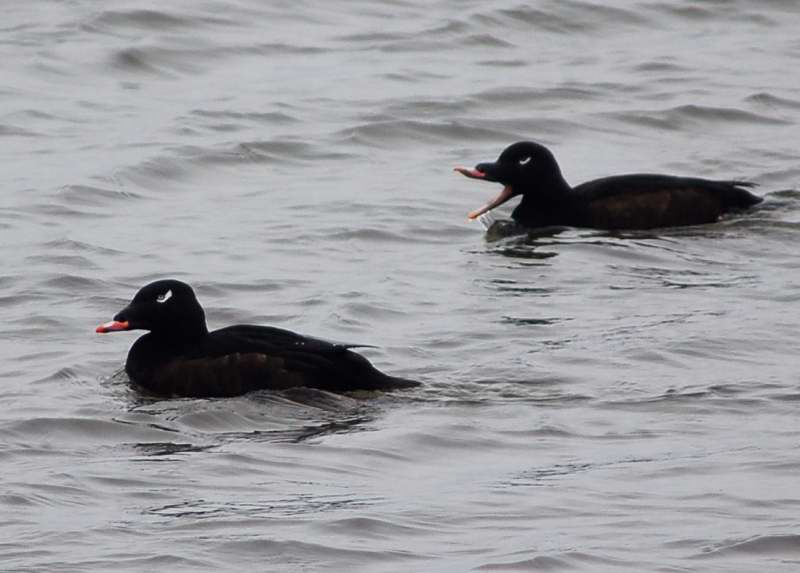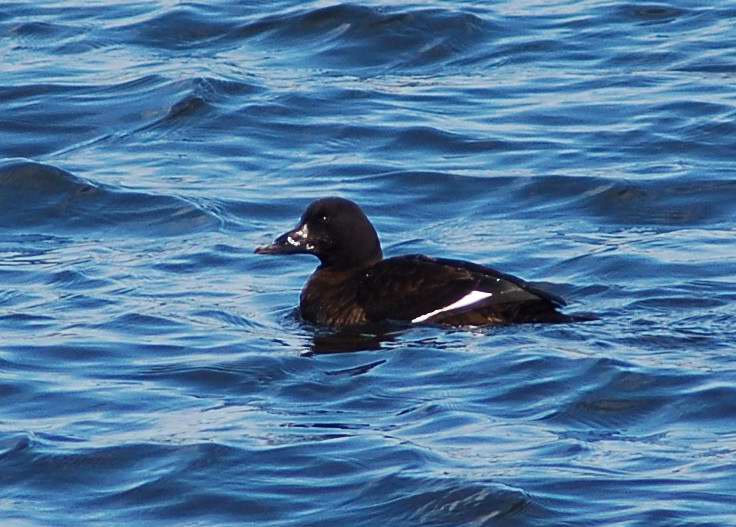White-winged Scoter, Melanitta fusca
Note: this post, while published, is a work in progress, as are all posts in this series, My Photo Life List. My goal is to photograph every species of bird that is seen on a regular basis here in Michigan, working from a list compiled by the Michigan chapter of the Audubon Society. This will be a lifelong project, that I began in January of 2013, and as I shoot better photos of this, or any other species, I will update the post for that species with better photos when I can. While this series is not intended to be a field guide per se, my minimum standard for the photos in this series is that one has to be able to make a positive identification of the species in my photos. The information posted here is from either my observations or the Wikipedia, the online free encyclopedia, however, I have personally shot all the photos appearing in this series.
White-winged Scoter, Melanitta fusca
The White-winged Scoter breeds over the far north of North America. It winters further south in temperate zones, on the Great Lakes, the coasts of the northern USA and the southern coasts of Canada, and Asia as far south as China. It forms large flocks on suitable coastal waters. These are tightly packed, and the birds tend to take off together.
The lined nest is built on the ground close to the sea, lakes or rivers, in woodland or tundra. 5-11 eggs are laid. The pinkish eggs average 46.9 mm (1.8 inches) in breadth, 68.2 mm (2.7 inches) in length and 82.4 grams (2.9 oz) in weight. The incubation period can range from 25 to 30 days. After about 21 days, neighboring females may start to behave aggressively towards other nesting females, resulting in confusion and mixing of broods. By the time she is done brooding, a female may be tending to as much as 40 offspring due to the mixing from these conflicts. The female will tend to her brood for up to 3 weeks and then abandon them, but the young will usually stay together from another 3 weeks. Flight capacity is thought to be gained at 63 to 77 days of age.
In freshwater, this species primarily feeds on crustaceans and insects, while in saltwater areas, it feeds on molluscs and crustaceans. The favorite foods of the American (sub)species are an amphipod Hyalella azteca in freshwater, and rock clams Protothaca staminea, Atlantic Siliqua and Arctic wedge clams Mesodesma arctatus.
On to my photos:
This is number 55 in my photo life list, only 295 to go!
That’s it for this one, thanks for stopping by!














I’ve never even heard of this one. It reminds me of a duck.
LikeLike
March 14, 2013 at 6:19 am
Neither had I, and it is a duck.
LikeLike
March 14, 2013 at 8:29 am
I see quite a few of these guys around here.
LikeLike
March 14, 2013 at 3:01 am
I’m sure that they are much more common in your area, they just winter here and move on in the spring.
LikeLike
March 14, 2013 at 8:28 am